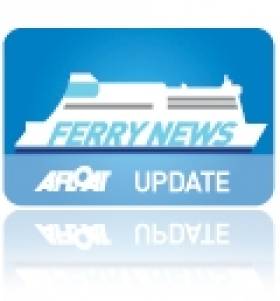Displaying items by tag: SS St Patrick II
Stena Line to Mark History of Wartime Bombed Ferry
#FERRY NEWS - A commemoration plaque in memory to those who lost their lives when the Irish Sea passenger ferry S.S. Patrick (II) was attacked by a bomb from the Luftwaffe during WW2, is to be unveiled in Rosslare Europort next Wednesday.
The tragic attack in 1941 resulted in the 1,922 tonnes vessel sinking with the death of 30 people while the twin-screw steam turbine powered vessel was on passage off the Welsh coast. The ship built in 1930 was launched from the Alexander Stephen & Sons Glasgow (Yard No 525) Glasgow, and she commissioned to serve the St. Georges's channel route between Rosslare and Fishguard.
She had been targeted by a German machine gunner the previous year even though it was not a military vessel and the reasons for its attack have remained a mystery to this day.
Diane Poole OBE, Head of PR and Communications at Stena Line said, "The ship that sank was owned by the Fishguard and Rosslare Railways and Harbours Company (FRRHC), of whom Stena Line along with Irish Rail/Rosslare Europort are descendants.
She added: "Despite the deaths and the trauma attached to the event, the memory of the ship and those who went down with her has largely been lost. There has never been a true commemoration in Ireland of the disaster – until now."
For further information about the tragedy click HERE and a documentary recorded for RTE Radio On can be listened to by clicking this LINK.
The current ferry operating the route is the Stena Europe (1981/24,828grt) which has maintained the route for the last decade. Sailings on the summer schedule will not be boosted by the fast-ferry craft, Stena Lynx III which was sold last year to serve new South Korean owners.






























































